WITH ITS ANCIENT FEEL, IT IS EASY to forget that Hue’s Imperial City isn’t a contemporary of Cambodia’s 9th Century Angkor Wat or Sukhothai in Thailand. The country we know as Vietnam has existed only since 1802, when Gai Long—with an assist from France that would have long-term consequences—united the country. Emperor Long soon built his new capital in Hue using Beijing’s Forbidden Palace as a model. It remained the political, cultural and religious center of the Nguyen Dynasty until 1945.
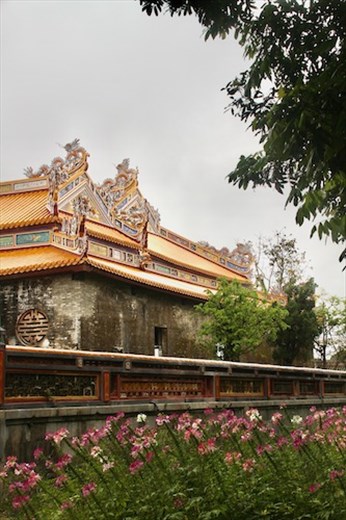
Inside the Citadel but still outside the Imperial City
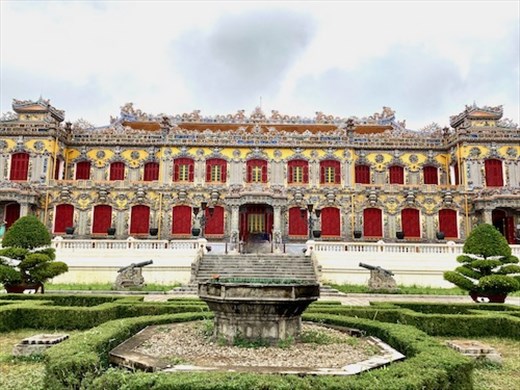
Kiến Trung Palace
The Complex of Hue Monuments UNESCO World Heritage Site is in a word, Complex! Wheels within wheels, as it were. First we crossed the Perfume River from the City of Hue and into the Citadel proper where we paid our admission. Tickets in hand we entered the Imperial City heading towards the Inner City where we hoped to find the Forbidden Purple City. Confused? You bet! And that’s just the Imperial City, not the numerous royal tombs and temples.
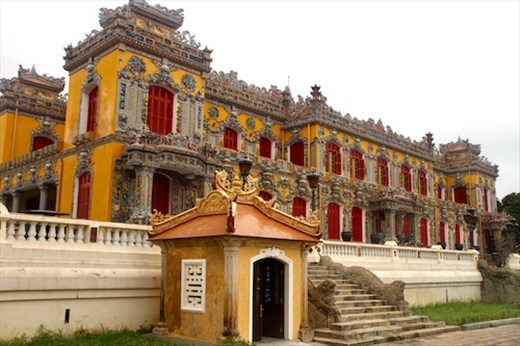
Kiến Trung Palace

Dragon guarding Kiến Trung Palace
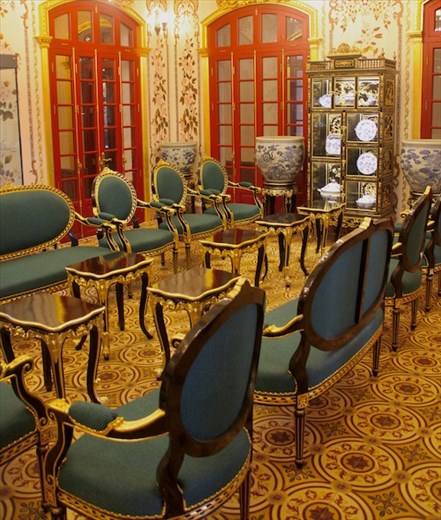
Formal room, Kiến Trung Palace
A guided tour was an option but we like to explore at our own. We didn’t need to hear chapter and verse about the insignificant Nguyen Dynasty’s reign—except for the French, Vietnam’s relevance began with the arrival of Ho Chi Minh. Since Uncle Ho moved the capital to Saigon in 1945, natural disasters and the passage of time have left their mark on Hue. Much of the damage, however, occurred during the Vietnam War—the American War as it is known in Vietnam.

Row of Urns, Kiến Trung Palace
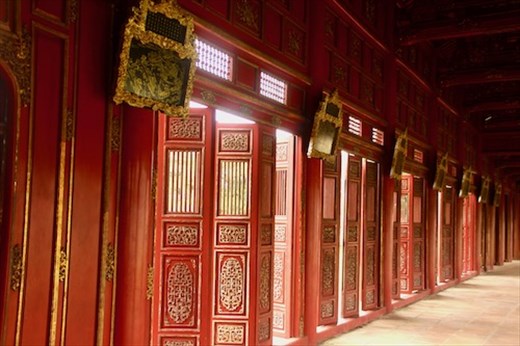
Red Doors, Inner City
Although we visited the Imperial City in 2008, today felt like our first time—short memories and a different perspective I imagine. Our route followed the path of least resistance, going from a “Look at that!” here to an “Oh, wow!” over there with Kiến Trung Palace usually front and center.

Three Women in Ao Dai
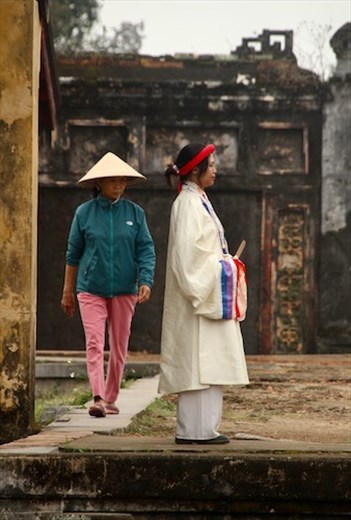
Casual and Traditional
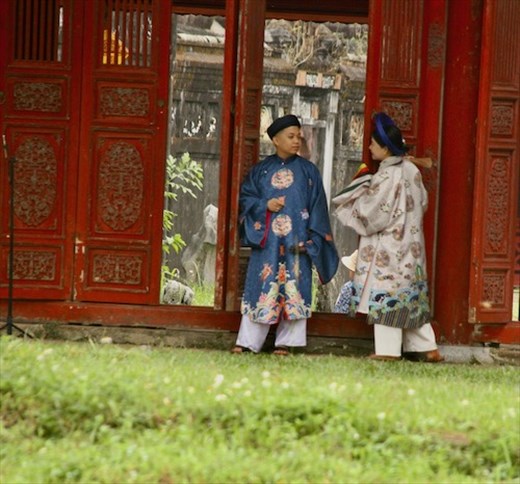
Dressed for Success
There were people to watch, too—many from selfie snapping tour groups, others posing for Instagram photos and some wandering just like us. We especially liked the three ao dai’d young women gathered together in the lustrous red hallway and the couple in traditional garb outside a pavilion.
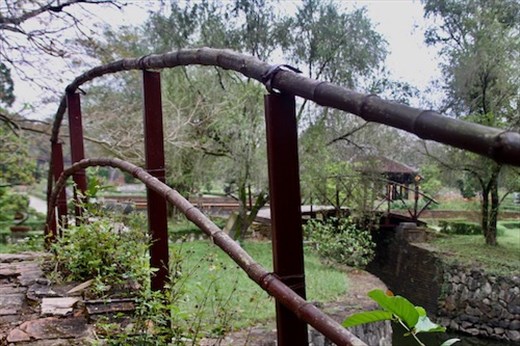
Secret entrance to Royal Garden

Bridge over peaceful waters, Royal Garden
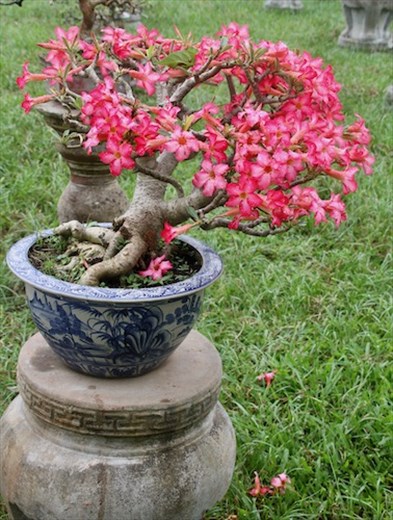
Bonsai Frangipani, Royal Garden
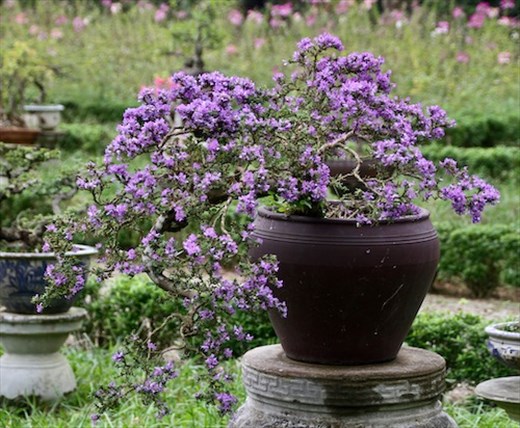
Our favorite bonsai, Royal Garden
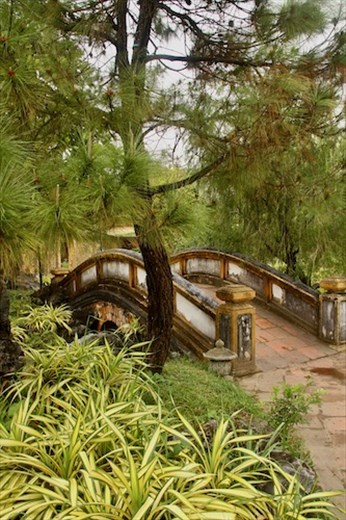
Tranquility
I followed Connie up a crumbling pathway with a bamboo railing into the Royal Garden, one of our favorite places. Never have we seen so many bonsai in one place, or so many varieties. These weren’t tiny Japanese bonsai but a larger variety tended for life outdoors. We continued across scenic bridges spanning koi-filled ponds past small shrines honoring large Buddhas, the dilapidated Royal Treasury and finally out one of the thirteen main gates.
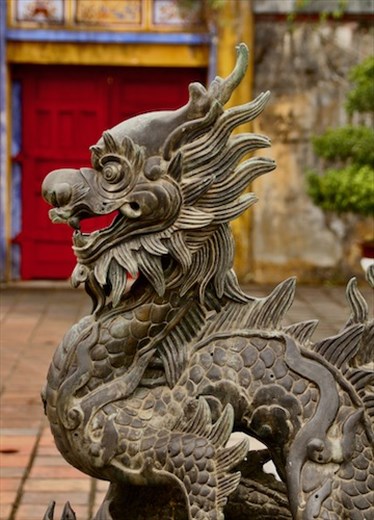
Dragon and Red Door
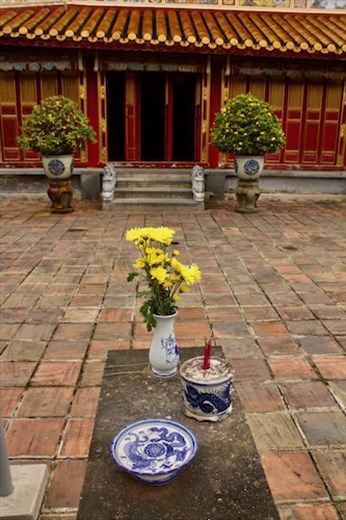
An Offering
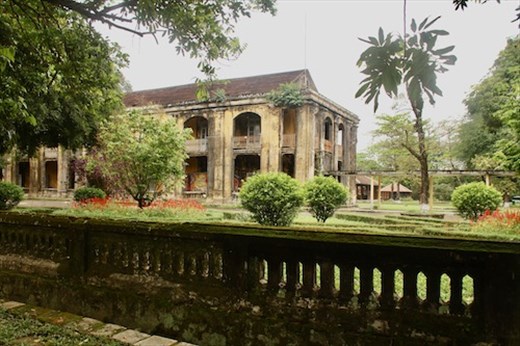
Royal Treasury needs a bailout
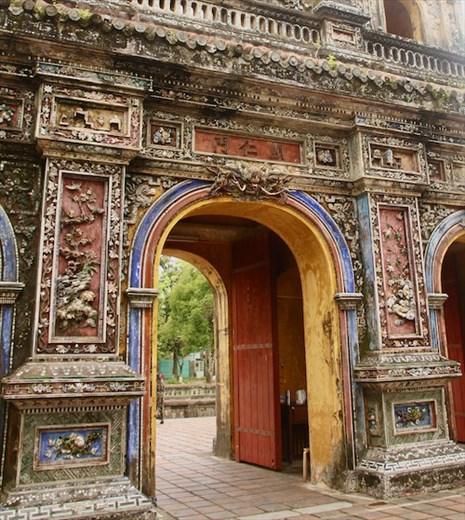
A Grand Exit
We retraced our steps back to Saigon Morin for lunch and a well-deserved massage, less than $20 for an hour, including tip. Later we picked up our laundry at a local shop and had dinner at an Italian-Vietnamese restaurant with surprisingly good (Connie) Italian and (John) Vietnamese food.
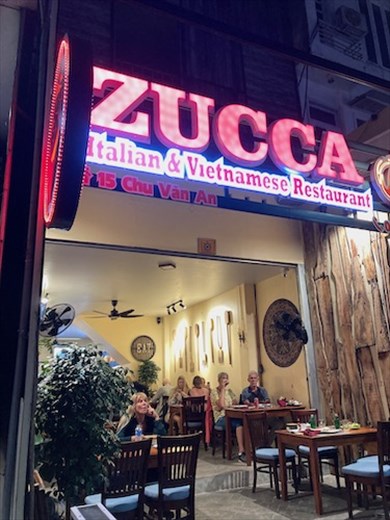
Surprisingly Good!